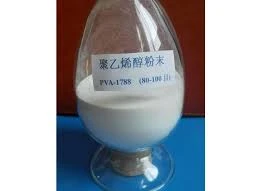Understanding Hydroxypropyl Methyl Cellulose (HPMC) and Its Chemical Composition
Hydroxypropyl Methyl Cellulose (HPMC) is a non-ionic, water-soluble polymer derived from cellulose. Its distinctive chemical structure and properties make it a widely favored compound in various industries, including pharmaceuticals, food, and construction. This article aims to delve into the chemical composition of HPMC, its multifaceted applications, and its significance in modern formulations.
Chemical Composition of HPMC
HPMC is synthesized by reacting cellulose with propylene oxide and methyl chloride. The resulting product is a cellulose ether with hydroxypropyl and methoxy groups substituting some of the hydroxyl (-OH) groups present in cellulose. The degree of substitution of these groups defines the solubility and viscosity of HPMC in water.
The chemical formula of HPMC can be generalized as \[ \text{C}_6\text{H}_{10}\text{O}_5 \text{ (for cellulose) + hydroxypropyl and methoxy groups} \]
The methyl substitution introduces hydrophobic characteristics, while hydroxypropyl substitution increases solubility in cold water. Typically, the chemical composition can be characterized by the following parameters - Methoxy Content The percentage of methoxyl groups in HPMC can range from 19% to 30%. - Hydroxypropyl Content This usually varies from 5% to 12%. - Viscosity HPMC is available in different grades based on viscosity, which is influenced by the polymer's concentration, degree of substitution, and molecular weight.
Applications of HPMC
1. Pharmaceuticals HPMC plays a crucial role as a binding agent in tablets, providing controlled-release properties. Its ability to form gels makes it ideal for formulating hydrophilic matrices for sustained drug release.
2. Food Industry In food products, HPMC acts as a thickener, emulsifier, and stabilizer. It is used to improve texture and maintain moisture in various products, including sauces, dairy items, and baked goods. Given its plant-based origin, HPMC is popular in vegetarian and vegan food items.
chemical hpmc hydroxypropyl methyl cellulose

3. Cosmetics and Personal Care HPMC is commonly used in cosmetic products as a thickening agent and skin-conditioning agent. Its water-binding ability and film-forming properties enhance the stability and application of lotions, gels, and creams.
4. Construction In the construction industry, HPMC is incorporated into polymer-modified mortars and adhesives to improve workability and drying times. It aids in achieving a smoother finish and prevents cracking during the curing process.
5. Agriculture HPMC is utilized as a soil conditioner, helping to improve water retention in soils, which is crucial for arid regions. It also serves as a coating agent for fertilizers, enhancing their efficiency and controlled release.
Environmental Considerations
One of the notable attributes of HPMC is its biodegradability, making it an environmentally friendly alternative to many synthetic polymers. Its renewable origin contributes to sustainable practices in various industries, aligning with the growing demand for eco-conscious materials.
Conclusion
In summary, Hydroxypropyl Methyl Cellulose (HPMC) is a versatile and valuable polymer that plays a significant role in numerous applications across different sectors. Its unique chemical composition, which balances water solubility and viscosity, positions HPMC as a critical component in enhancing product performance. As industries continue to seek sustainable and effective solutions, HPMC's significance is likely to grow, reinforcing its position as an essential ingredient in modern formulations.
In conclusion, the understanding and application of HPMC are pivotal for innovation across various fields, and its role in advancing technology while ensuring environmental sustainability cannot be overstated.
-
Rdp Powder: Key Considerations for Wholesalers in the Building Materials IndustryNewsJul.08,2025
-
Key Considerations for Wholesalers: Navigating the World of Hpmc - Based ProductsNewsJul.08,2025
-
Hpmc Detergent: Key Considerations for WholesalersNewsJul.08,2025
-
Key Considerations for Wholesalers: China Hpmc For Tile Adhesive, Coating Additives, Concrete Additives, and MoreNewsJul.08,2025
-
Crucial Considerations for Wholesalers: Navigating the World of Construction MaterialsNewsJul.08,2025
-
Key Considerations for Wholesalers Sourcing Additive For Cement, Additive For Concrete, Additive For Putty from Additive Manufacturer Shijiazhuang Gaocheng District Yongfeng Cellulose Co., Ltd.NewsJul.08,2025




